
Generally speaking, the entomology does not know such a species as a garden bug. This name is collectively called all the bug bugs that live in areas planted with cultivated plants. Sometimes these insects are also called garden bugs, which are one and the same (especially since for many summer residents the garden and garden are one common plot near the house).
On the ordinary suburban six hundred square meters you can find representatives of several dozen species of these insects with a very diverse body shape and coloring. Moreover, the garden bug can be both a pest, damaging various plants, and a very useful exterminator of other harmful insects.
The following photos show typical garden bugs - berry shchitniki. This is one of those very stink-bugs that leave a luscious sweet smell on their hands and which some people for some reason are afraid of in panic:

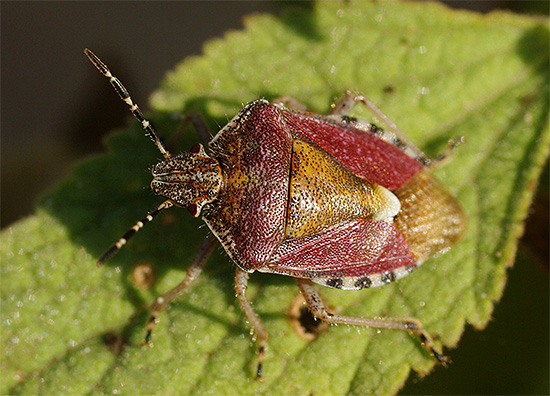
Feedback:
“Terrible insects. I am afraid of them since childhood, right already all shakes when I see! Sometimes they fly into our house right, then I can not calm down all day. I remember this nasty smell ... "
Yana, St. Petersburg
Being bright and fairly beautifully painted insects, garden bugs may be of sports interest for the naturalist lover:
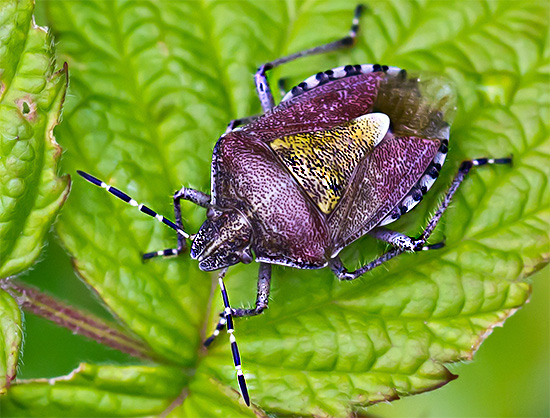

Among them are also dangerous pests of agriculture. For example, some bugs in the garden damage cabbage leaves and radish, while others parasitize pear trees and cucumbers in greenhouses.
All harmful garden bugs feed on plant sap, piercing the skin of leaves or soft stalks and sucking on nourishing juices. On the leaves after that appear brown spots, over time, increasing in size. The leaves of cucumbers and cabbage after such an attack are often twisted and dried.
The photo below shows a typical garden bug on a cabbage leaf:
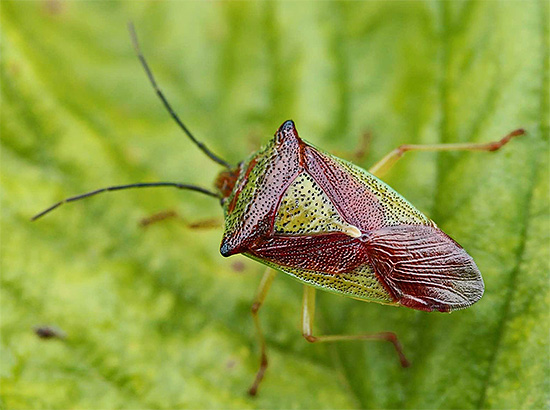
On a note
Bedbugs are malicious pests of agriculture on a national scale. Yield losses from the so-called bug bug are estimated at thousands of tons of grain per year, and in some gardens up to a quarter of young trees die from the attacks of the pear bug.
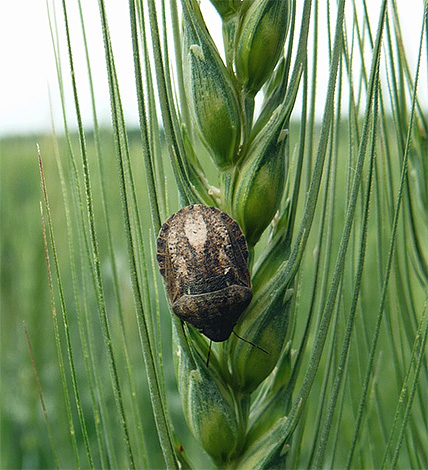
So, some garden bugs are pests.For this reason, summer residents and gardeners useful to know how to get rid of them and prevent mass reproduction in the future. However, you should also be able to distinguish different types of bedbugs from each other: some of them are useful predators, actively destroying aphids, thrips, caterpillars of harmful butterflies and larvae of the Colorado beetles. The fight against harmful garden bugs should not affect such assistants.
Harmful garden bugs
There are a lot of different types of harmful garden bugs. There are typical pests that parasitize on fruit crops, and there are also representatives who easily switch from feeding wild plants to sabotage in gardens.
- A typical example is the green forest shielder, known among gardeners as a green garden bug. It usually feeds on various wild and park trees and shrubs, but it also penetrates into the garden plots with a hunt and damages raspberries in the first place. The photo shows his adult individual:
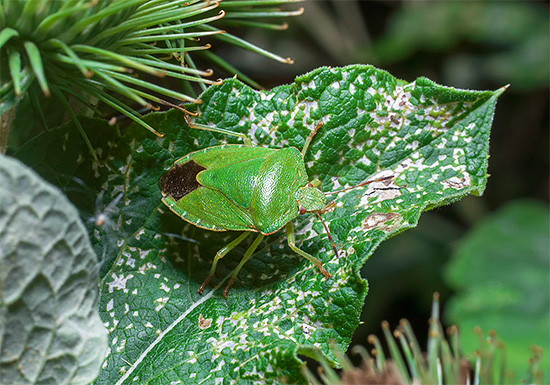
- Even more dangerous for the garden is the cruciferous bug, in science called northern Eurydema. This pest is similar in color to the usual soldier bugand feeds on cabbage, radish, radish, cress and some other plants, often leading to their death;

- Pear bugs - have a very interesting appearance. They feed on apples, pears, quinces, plums, apricots, cherries and some others, with abundant reproduction leading to a drop of leaves from trees and the death of fruits.
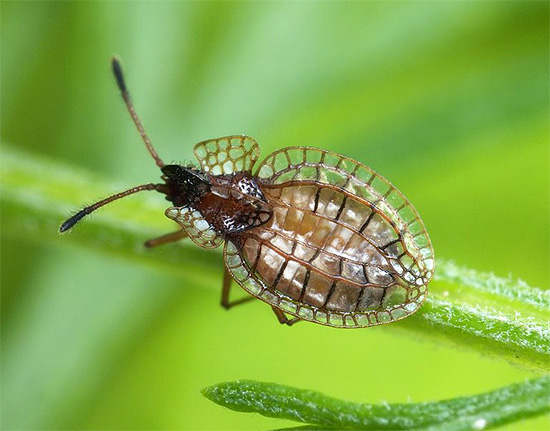
- The already mentioned berry shivniki is a pest of currant, raspberry, gooseberry, black chokeberry. The photo below shows a representative of this species.

- The cucumber bug is one of the smallest. The length of his body usually does not exceed 3 mm. It rests mainly on the underside of the leaves of cucumbers, eggplants, tomatoes, and sweet peppers, and therefore is hardly noticeable. Often infects greenhouses. It has a characteristic body shape and jumps well. In the photo - adult insects:
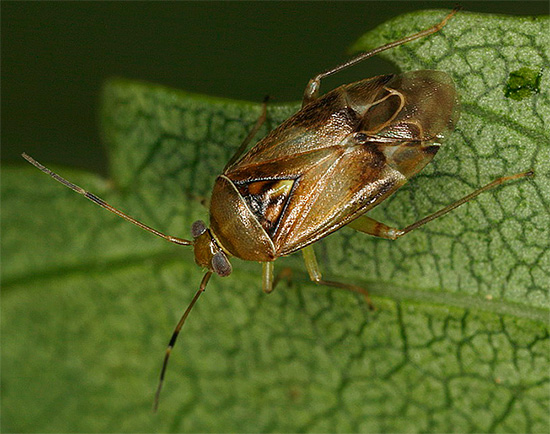
- Bug harmful turtle in the gardens and gardens is quite rare. Its diet is cereals, and only occasionally does this bug harm other plants. With mass reproduction, these insects can fly in large quantities on areas from the surrounding fields.

- The whole family of gadflies is a real scourge in the European part of Russia.These garden bugs can harm almost all plants, and due to their relatively small size, they rarely attract attention. In the photo - bugblind:
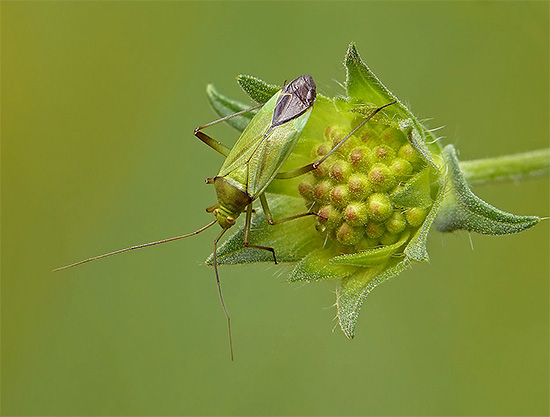
Can garden bugs be dangerous to humans?
Among the bugs found in gardens and on kitchen gardens in Russia, there are no species that are dangerous to humans. "Domestic" herbivorous and even predatory bugs have a too soft proboscis, with which they simply cannot pierce a person's skin, that is, they cannot bite.
However, very rare cases are known when garden bugs still bit a person, but this is an exception to the rule.
With regard to bed bugs that feed on blood, then in the gardens, they, of course, are not found.

On a note
In tropical countries, especially in South America, some triatom bugs are found on agricultural lands, in gardens and in vegetable gardens, where they parasitize various mammals and can even attack humans. These insects are carriers of the deadly Chagas disease.
Shield bugs: a variety of species and colors
Shchitniki - a large family of bedbugs, in which there are more than 4,000 species.In this family there are both species harmful to gardening and useful (predatory) species, so voracious that they are even bred at special stations for the purpose of releasing them on agricultural land for the destruction of pests.
Shields are often brightly painted. For example, the photo shows an Italian bug:

And here there is a red-legged shieldfish, which can simultaneously harm trees and feed on other pests:
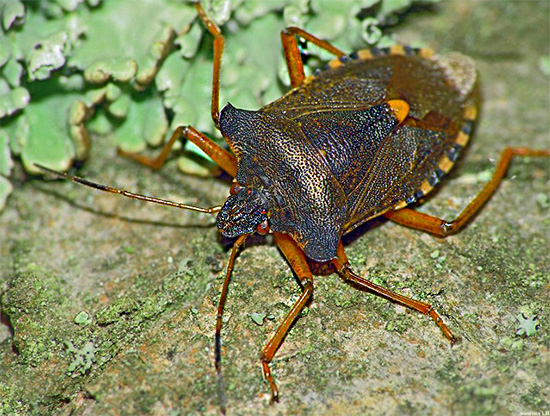
The shield of the boy, having a very intricate color - is also one of the pests:
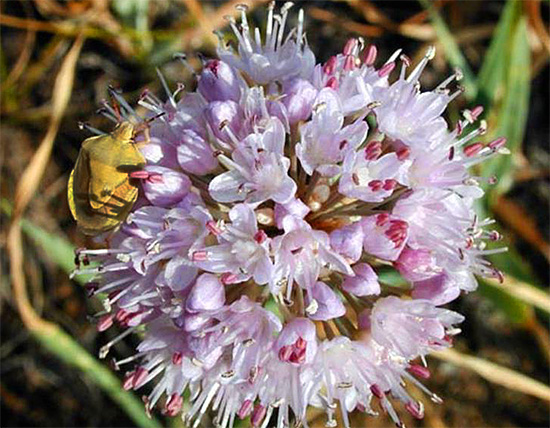
And this photo shows an earthen shield:

Predatory bugs - assistants in the fight for the harvest
Although in our country there are quite a lot of different types of predatory bugs, but in general, due to their small number, they rarely seriously affect the populations of harmful insects. Predatory bugs are often found in gardens, but they usually do not attract attention.
In the photo - ringed predator, often found near apiaries. He hunts bees, waiting for them on flowers:

From North America to Europe, a two-century perillus (Perillus bioculatus) bug was repeatedly imported, a shielder that very effectively exterminates the larvae and adult Colorado beetles:
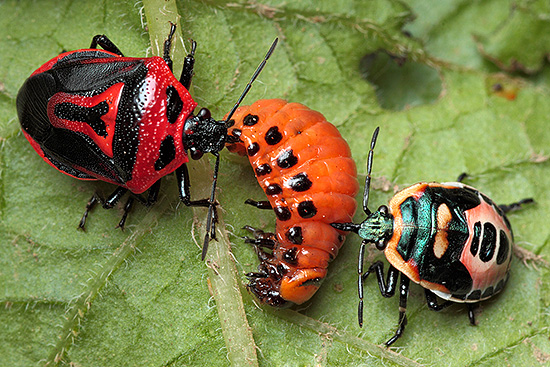
However, in the conditions of our country, this species does not tolerate wintering and dies. Only in the Krasnodar Territory were populations found that acclimatized and successfully hibernating.
Pykromrus - a bug that lives in the European part of Russia and in Europe. He actively eats almost any caterpillars and larvae, including the scoop, sawflies and the Colorado potato beetle:
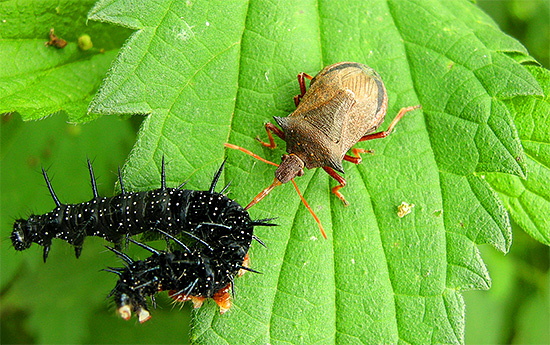
And one more species - pozidus - is specially produced on the fields in spring and does not hibernate. It can sometimes be found in the garden after such a massive release:
Red-claws ordinary, or soldiers
And of course, the most famous and common type of bedbugs in gardens and on the gardens is the so-called bug of the soldier, or the red-flock of the ordinary. Sometimes these insects can be so much that they begin to harm the plants, although they are usually harmless to the farm.
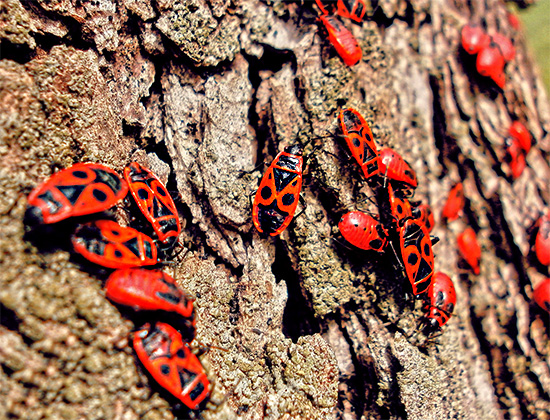
Soldiers are found both in the gardens and around the outbuildings. They feed on various plant and animal food, mainly dead insects, rotting plant debris and fruits. Only in rare cases can Redblips suck on plant sap, including grapes and saplings, causing them harm.
Perhaps the main feature of the soldiers' bugs is their coloniality. It is because of it that they are so noticeable on stumps, stones and just on the ground.
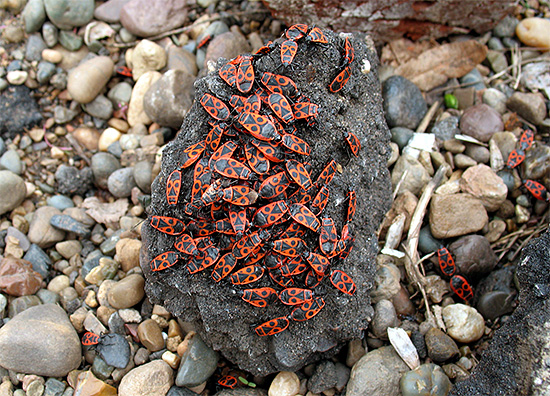
Tens and hundreds of red insects are particularly striking in early spring, when they are just beginning an active life.
How to get rid of bedbugs pests in the garden
When meetings with harmful bugs in the garden become regular, and on the plants you notice the leaves damaged by them, it’s time to start a fight, not waiting for the pests to cause even more damage.

In greenhouses, the fight should begin immediately after the discovery of the first insects. This is especially true for cucumber bug.
Methods of dealing with garden bugs are divided into chemical and agrotechnical. The former include spraying of plants with insecticides (usually from the group of pyrethroids or organophosphates), and one should strive to treat both surfaces of the leaves. It is recommended to use insecticides of selective action (for example, Aktara agent) - they do not so much affect useful bugs, but they actively destroy pests.
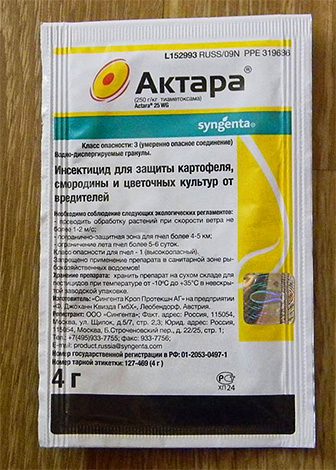
Agrotechnical measures to combat garden bugs - is primarily the cleaning of fallen leaves, among which adults spend the winter, plowing between the rows or the entire garden area.If the site is small, and there are few trees and bushes on it, it is reasonable to manually collect the leaves with the larvae set aside. This measure is safe for the garden and quite effective.
Garden pests - bedbugs ...
Interesting video fragments from the life of the bugs-soldiers

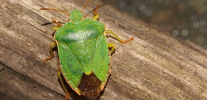
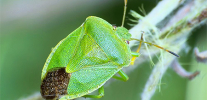
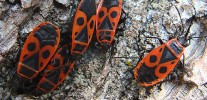
You write that garden bugs do not bite a person ... They bite me very much. Every time I come from the garden with at least one bite.Edema, redness and terrible itching for many days. Than just not curing ... Here they are such green stink bugs. I am preparing to devote the next weekend to a merciless fight with them 🙂